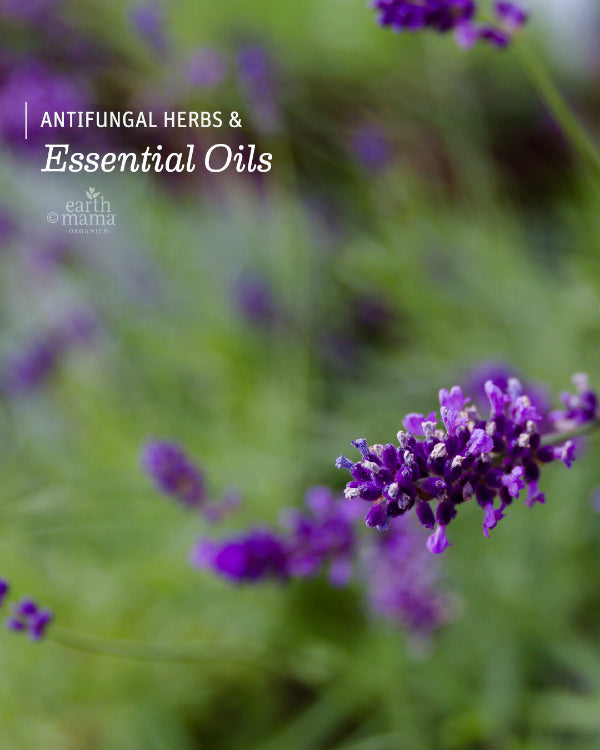
By Karin Parramore, LAc, CH
We live in a world teeming with life, thanks in part to the high moisture content of our beautiful blue globe. After all, our planet holds 326 million trillion gallons of water!1 All that moisture is what allows for the verdant growth of life that makes Earth so unique.
However, while we love to see the lush green of growing things around us, it is much less pleasant to find them growing on us! Under normal circumstances our body can defend against fungal overgrowth. The acid mantle of our skin, naturally occurring friendly bacteria, and our immune response all work to keep fungus in check. Sometimes, however, particularly when we are under stress of any kind, we need a little help. Fortunately, Nature has provided us with many effective antifungal agents.
One well-known and time-honored antifungal is Tea Tree oil (Melaleuca alternifolia). Tea tree oil has been extensively researched, which means there is hard data about its effectiveness. For example, in a study on dandruff, believed to be associated with the fungus Pityrosporum ovale, there was a marked clinical response seen in 68% of the 50% tea tree oil group and 72% of the 25% tea tree oil group, compared to 39% in the placebo group.2
This is interesting—the study showed that a lower concentration of tea tree oil, 25% dilution, proved to be more effective than the more concentrated formula. This holds true generally for essential oil use—less is usually more effective.
Tea tree oil seems to work against fungus by disrupting the integrity of the cell membrane.3 By making the membrane more fluid, agents that kill fungus have an easier time entering the cell. It may be that Tea tree oil helps our natural defenses have an easier time destroying the fungus. Anytime we can use our natural defenses against an infectious agent our immune system grows stronger as a result, and more likely to deal effectively with the invader the next time it shows up.
Myrrh (Commyphora molmol), which has been used by many different cultures for centuries, is another plant with a great deal of recent research behind it. Studies seem to suggest Myrrh acts as an immunostimulant, helping those natural defenses act more effectively against fungus and other pathogens. It does this by increasing white blood cells, those little fighters of the immune system that help keep us safe. In addition, myrrh has direct antimicrobial actions.4
Better yet, Myrrh seems to be effective against a broad spectrum of fungi. Traditionally, it has been used for thrush, herpes simplex, Candida and other yeast infections. In one study, fractions from Commyphora molmol showed antibacterial and antifungal activity against standard pathogenic strains of Escherichia coli, Staphylococcus aureus, Pseudomonas aeruginosa and Candida albicans.5
All the microbes in this study have been associated with the rise of nosocomial (hospital-induced) infections as they have become more resistant to conventional antimicrobial agents. Perhaps it is time for health institutions to consider a return to naturally effective antimicrobials.
Diaper rash is another common fungal infection associated with Candida albicans. As Myrrh has been shown to be effective against Candida it makes a great topical treatment for babies’ little bottoms. It works particularly well in combination with Calendula, a soothing, healing herb that can calm the associated inflammation.
And while it is true that historically, ground myrrh was dusted into shoes to help with foot fungus, a good long soak in a footbath with myrrh essential oil might be easier and less messy!
Stubborn fungal infections of the nail-bed are often the most resistant to cure. This is because the nail is so efficient at protecting the underlying skin—it can be hard to deliver the therapeutic agent to the site. It may be necessary to remove as much of the nail as possible, and may even require thinning the nail by filing it away. Some podiatrists will even drill a minute hole in the nail, although please, do not try this at home! Once the nail is out of the way, so to speak, applications of Thyme (Thymus vulgare) may be effective against these persistent nail fungus infections. A foot soak made with a strong Thyme tea, repeated often, can often eradicate fungus when nothing else has worked. Alternately, the essential oil may be used, but it is important to ensure it stays off the surrounding skin. The best way to do this is by the application of a barrier cream.
All fungal infections are notoriously difficult to clear. Whether you choose a pharmaceutical or an herbal treatment diligent application seems to be the only choice to truly wipe out fungus. Some infections may require multiple applications throughout the day, which can prove to be a tall order for busy people. The sheer tenacity of fungus means we need to be equally tenacious in our attempt to reclaim our health by reducing the fungal load to a level our natural defenses can manage.
While is it clearly important to reduce the fungal load, there are actually several aspects we must address to eradicate it altogether. As well as strengthening the immune system, it is vital to remove the nutrient source the fungus thrives on. While this is commonly understood in association with Candida infections, not as much attention is placed on diet for clearing fungal infections of the skin. Making changes to remove sugars in all forms from the diet will go a long way toward starving the fungus. It also makes sense to stop or reduce the intake of foods that contain fungus, like mushrooms, blue cheeses, and the like—if our body is having trouble with fungus on the skin it is probably having difficulty internally as well. It is best to strive to eat only fresh and freshly prepared food—fungus can grow on leftovers overnight!
It may also help to add antifungal herbs to the diet. Garlic, especially raw, is an ancient remedy against fungus, and Pau d"Arco tea has shown positive results as well. Cinnamon, a natural blood sugar regulator, may help the body adjust to a reduced sugar diet.
So many common elements of modern life, like stress, increased antibiotic and steroid use, and birth control pills can all increase the likelihood of a fungal infection. The increased incidence of diabetes and obesity means we are more likely to see more fungal infections as well. It is therefore important we know how to effectively avoid and treat fungus.
References
- http://science.howstuffworks.com/question157.htm
- http://www.raysahelian.com/teatreeoil.html
- Ibid
- https://www.umich.edu/health-medicine/
- http://www.ncbi.nlm.nih.gov/pubmed/10865454
